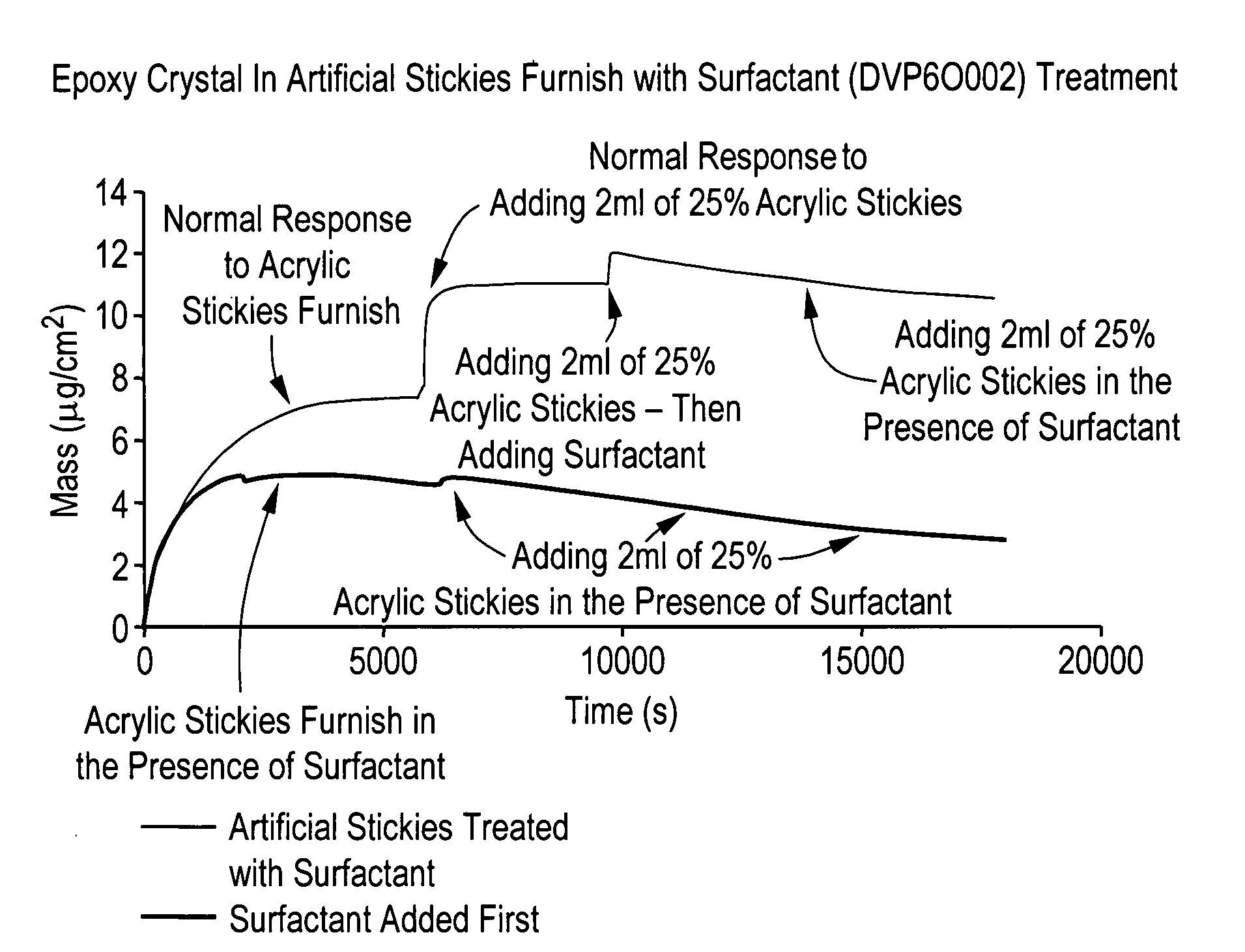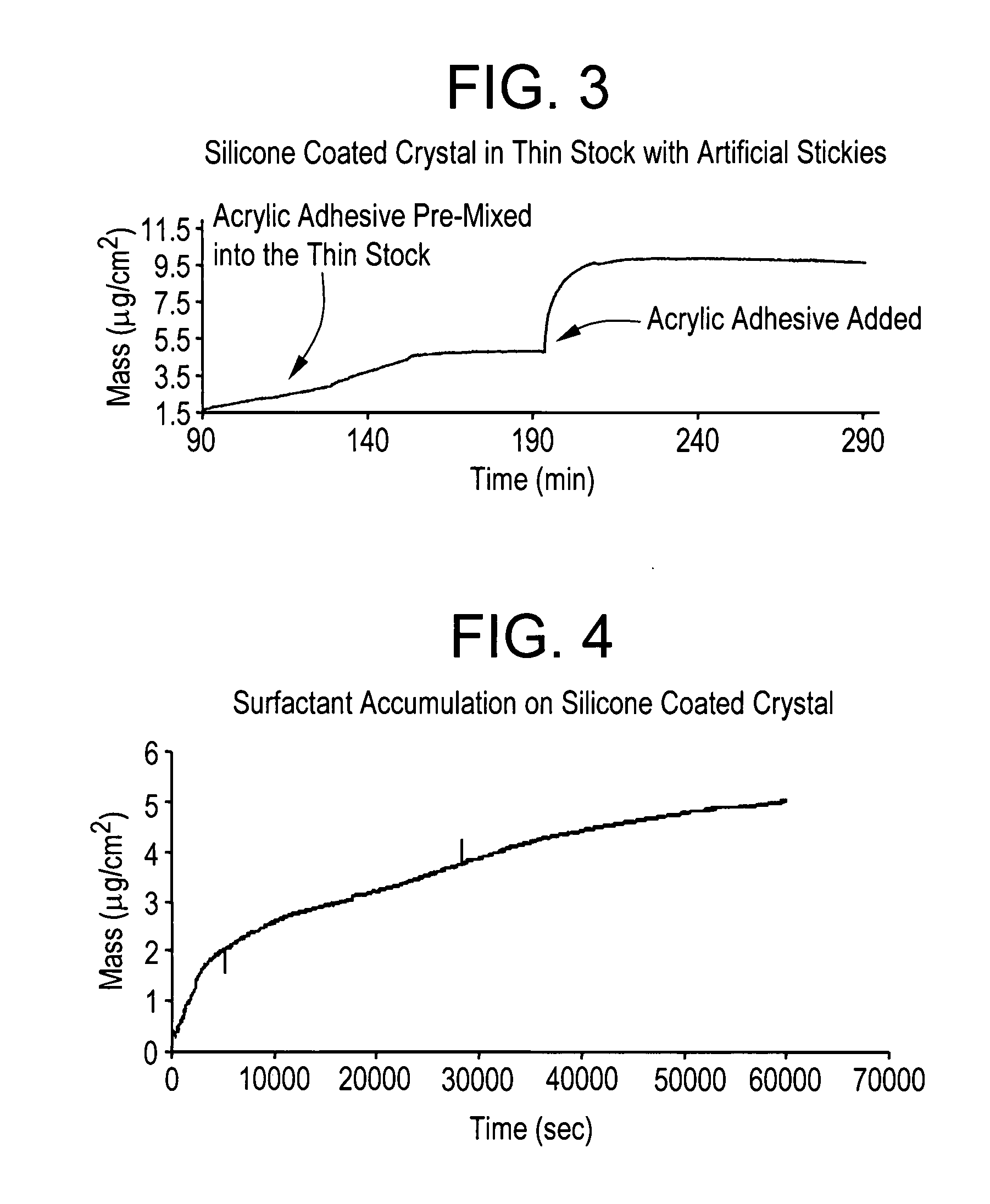Enhanced method for monitoring the deposition of organic materials in a papermaking process
a papermaking process and organic material technology, applied in the field of papermaking, can solve the problems of preventing proper operation, affecting the quality of papermaking, and affecting the quality of papermaking, and achieve the effect of reducing the deposition of one or more organic materials and reducing the deposition of organic materials
- Summary
- Abstract
- Description
- Claims
- Application Information
AI Technical Summary
Benefits of technology
Problems solved by technology
Method used
Image
Examples
example 1
[0047]Using the SRM per Protocol A, epoxy-coated crystals were screened for affinity to artificial stickies (acrylic adhesive) in the presence and absence of Nalco chemistries. With no treatment, the artificial stickies accumulated on the epoxy-coated crystal. As shown in FIG. 1 and FIG. 2, in presence of DVP6O002, a surfactant available from Nalco Company, Naperville, Ill., the artificial stickies have no affinity to the epoxy coated crystal.
[0048]As shown in FIG. 3, a possible alternative to the epoxy, a crystal was coated with room temperature vulcanizing (RTV) silicone, available from Dow Corning Corporation, tested positive for affinity to artificial stickies. In a blank experiment on a dilute pulp slurry containing surfactant DVP6O002, the mass was increasing over time, as shown in FIG. 4. Without surfactant, no mass increase is observed, so the hydrophobic RTV silicone coated crystal appears to be pulling the surfactant out of the slurry.
[0049]In an attempt to test the crysta...
example 2
[0050]Using Protocol B, the effects of swelling of the polymer coating in an aqueous environment were tested in deionized water and Kraft slurry (0.5% consistency) using the RQCM and the recirculation flow cell. As shown in FIG. 6, the results clearly show that the signal from swelling is minimal in comparison to the deposition observed from microstickies.
example 3
[0051]Using Protocol B, coatings were screened for their effectiveness at attracting microstickies. The results are shown in FIGS. 7, 8, and 9. PVC and polystyrene shows no significant response as a coating to attract microstickies in either slurries or the less abrasive whitewater.
[0052]As shown in FIG. 10, pre-treating the slurry with a surfactant before measuring reduces the deposition on the epoxy coated crystal by over 95%.
PUM
 Login to View More
Login to View More Abstract
Description
Claims
Application Information
 Login to View More
Login to View More - R&D
- Intellectual Property
- Life Sciences
- Materials
- Tech Scout
- Unparalleled Data Quality
- Higher Quality Content
- 60% Fewer Hallucinations
Browse by: Latest US Patents, China's latest patents, Technical Efficacy Thesaurus, Application Domain, Technology Topic, Popular Technical Reports.
© 2025 PatSnap. All rights reserved.Legal|Privacy policy|Modern Slavery Act Transparency Statement|Sitemap|About US| Contact US: help@patsnap.com



